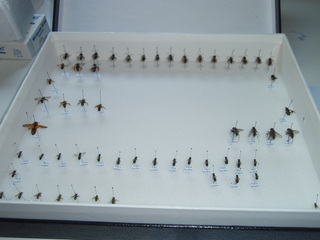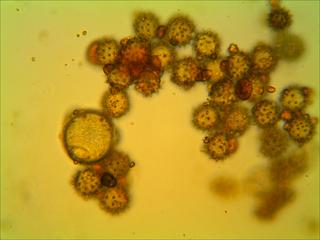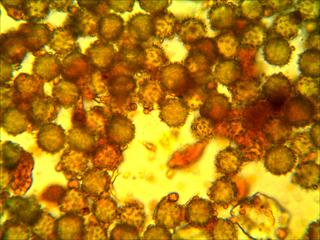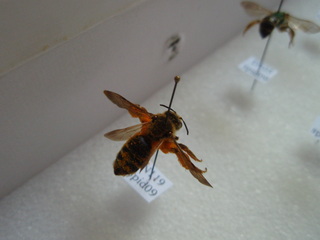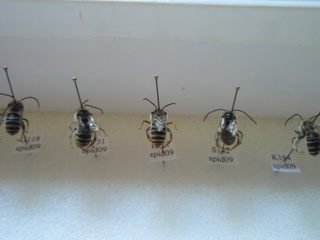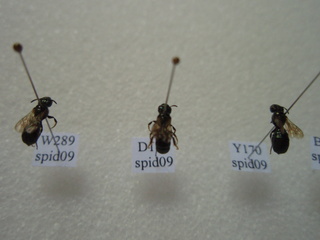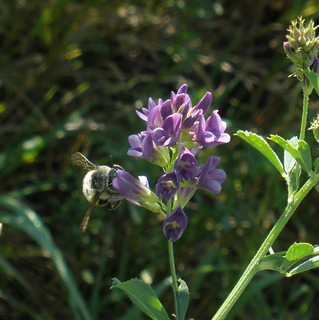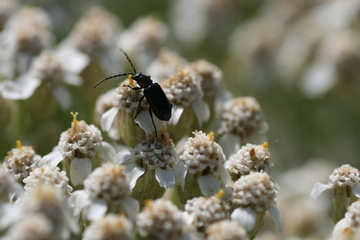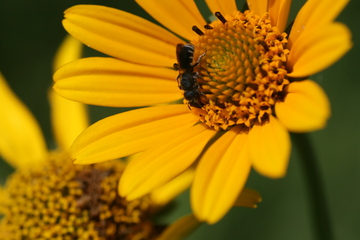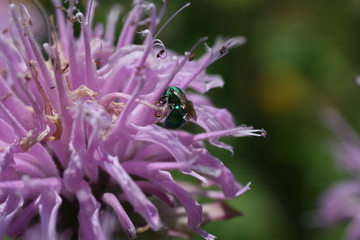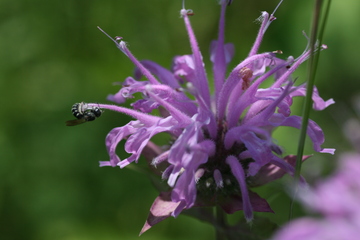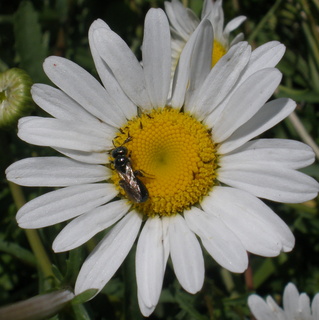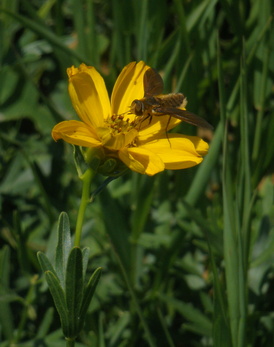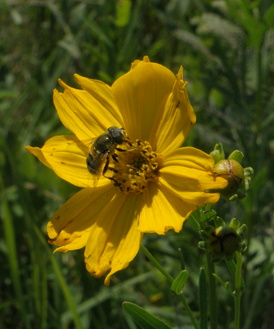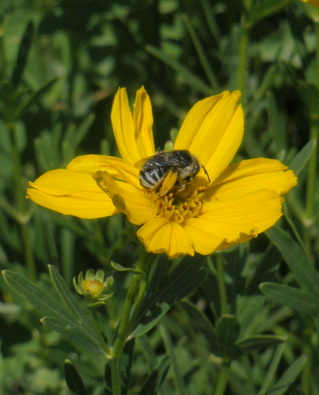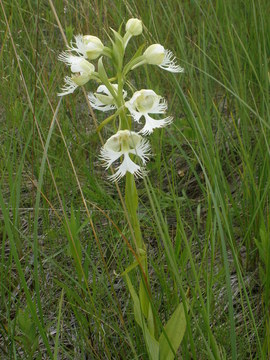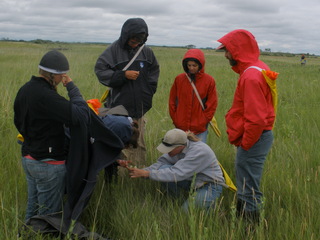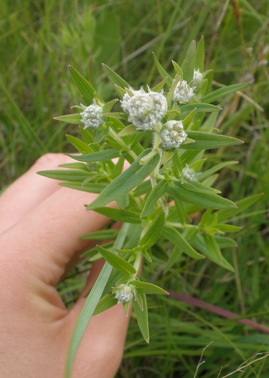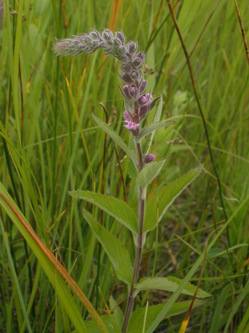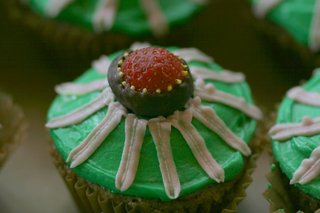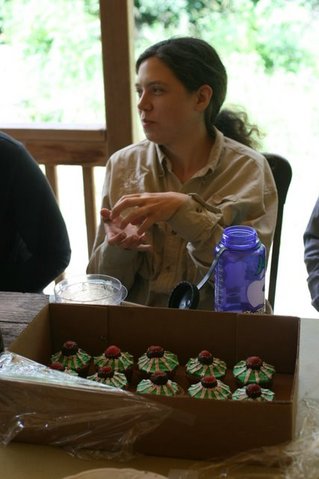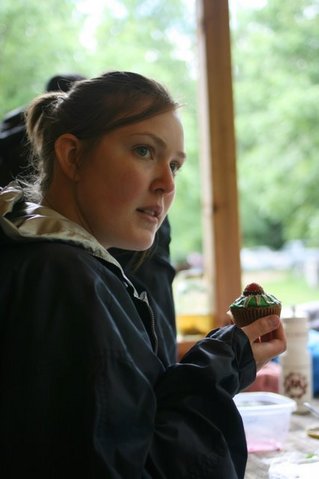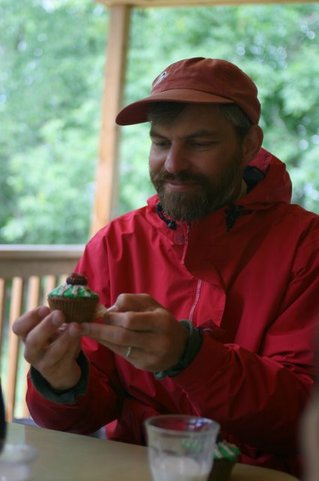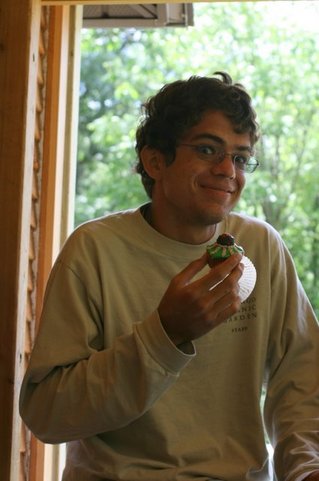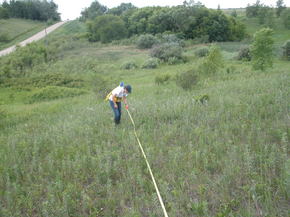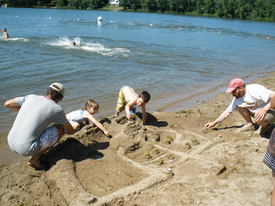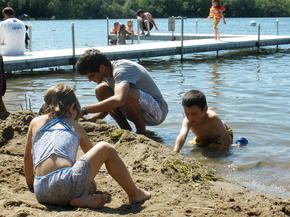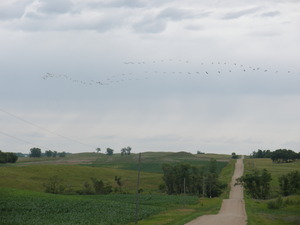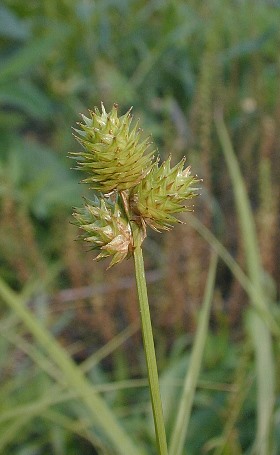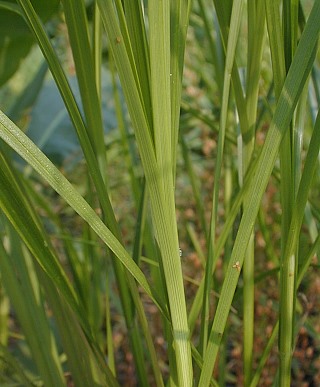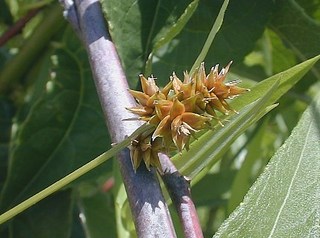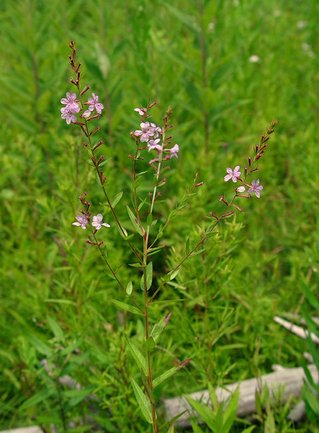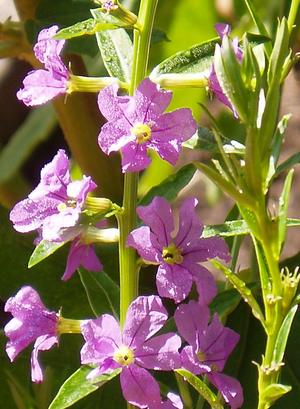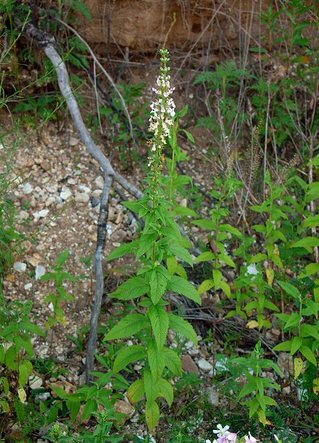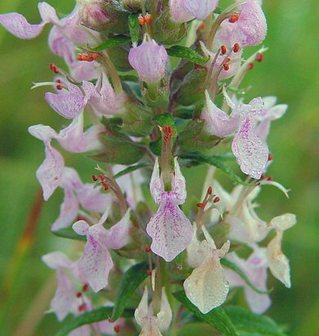|
|
Listen up, Echinacea fans!
I’ve now finished making slides and taking photos of the first 68 insect visitors–only 107 left to go.
Here are some photos of the process:
1) Here is an insect carrying LOADS of pollen (haha! get it?) which I am about to transfer onto a small agar cube on a microscope slide.

2) I heat the slide, complete with pollen-covered agar cube and cover slip, on a hotplate. Next I throw the completed, labeled slide under the microscope camera and take photos like these : :


3) I’ve pinned each specimen with a unique ID code that corresponds to its vial ID number.


The most common genera near as I can tell from the reference collection are…
Male Melissodes sp.

And Ceratina sp.

Please leave questions or comments and I’ll do my best to respond!
-Amanda
So, there has been a serious lack of pictures lately (aside from those awesome Stipa scans), so I am posting a bunch of pictures taken a while ago, just so you can see what we are up to:
http://www.flickr.com/photos/danrath/3727546804/
Amanda in her little corner of the farmhouse, doing voodoo with bees.
http://www.flickr.com/photos/danrath/3726738091/
http://www.flickr.com/photos/danrath/3726739525/
http://www.flickr.com/photos/danrath/3726736903/
Greg and Kate locked away in the Basement of Oppression
http://www.flickr.com/photos/danrath/3727538558/
http://www.flickr.com/photos/danrath/3727532876/
http://www.flickr.com/photos/danrath/3726727059/
http://www.flickr.com/photos/danrath/3727301314/
Berry Picking, starting with Caroline’s Gollum face. We have picked at least 20 buckets of berries from these people.
http://www.flickr.com/photos/danrath/3727297280/
http://www.flickr.com/photos/danrath/3726488747/
http://www.flickr.com/photos/danrath/3726486389/ – Aphids, the enemy.
Insects in the Common Garden that I found while searching for plants
http://www.flickr.com/photos/danrath/3726483267/
Mimi broadcasting Stipa grass
We spent most of yesterday collecting pollinators and measuring plants in the Common Garden. (It has never taken me 3 hours to go 30 metres before, but all the plants I measured seemed to be in the middle of a grass clump). I have also figured out a procedure for refinding plants in the transects, and it should not take very long to refind all of them. This is good, as I might be working by myself to do that.
Here’s some of the work I’ve done with organizing my data. I still need to figure out how to organize it to be able to analyze it, so this is mostly just preliminary work. I have about 2 weeks to put this all together….any help/advice is appreciated because right now, the data I have is a little overwhelming. There are 3 sheets in this document.
Ech Guide to Co-Fl Sp.xls
For next week, it looks like the weather should hold up for Tues and Thurs to be able to do pollinator observations. So we will need to flag the sites on Monday and have everything ready to go for Tuesday. Remember, you ALWAYS record something for each observation you make, regardless of whether or not you observed/caught a pollinator. Select No for poll. observed and No for pollinator caught if this is the case. Some things I wanted to clear up for people helping with FNC:
>If you reach 100 when counting inflorescences, stop and record >100.
>When recording the species within 10m, you will no longer put this into a memo. Instead you will always select pl A, record 0 for infl ct, and in the field of quadrants, select the fifth option called “within 10m”.
>Review the guide to co-flowering sp for how to count infl or print one up and ask me if you have questions.
>If you come across a new species that isn’t in the list of species in the form, record in the notes not only the species but also a brief description of how you counted inflorescences.
Thanks!
Here’s some of the pollinators I saw on Coreopsis near Hegg Lake. They seemed to only be pollinating Coreopsis although there were other species like Achillea, Amorpha, and Echinacea around.




On Friday all of us except Greg went on a trip to a mesic prairie 3 hours away to help Gretel look for orchids. We split into 3 groups of 3 and flagged the flowering plants within the various treatment grids.

The Western Fringed Prairie Orchid, Pratanthera praeclara a threatened species. The first orchid I’ve seen in the wild!

Allegra, Amanda, Daniel, Caroline, Amy, Stuart–it was pretty cold for mid-July!

Mountain mint–Pycnanthemum sp. It was really neat to see some different species found in the mesic prairie, as well as some familiar ones. Some others plants we saw were Liatris, Rudbeckia hirta, Apocynum, Lilium philadelphicum,, Asclepias incarnata, A. speciosa, and Campanula. Below is another mint, whose name I can’t remember:

Thanks Gretel for letting us help!
To celebrate peak flowering in the common garden, Megan made these awesome cupcakes. We all enjoyed them. Thanks, Megan!!


Megan with her breathtaking display of deliciousness.
Do you notice the stages of flowering presented here?

Mimi contemplates consuming something so beautiful.

Stuart basks in the celebration of his beloved study species.

Daniel enjoys with passion.
Photo from 2 July 2009, just after lunch break at the Hjelm house.

Daniel, Gretel, Mimi, Greg
Amy, Jennifer, Per, Hattie, Diedre
Kate, Allegra, Caroline, Amanda, Stuart
not shown: Ruth, Megan & Andrea
Thank you thank you thank you to everyone for helping this week. Just in terms of my project, we characterized floral neighborhoods for almost 70 plants in three days. In terms of pollinator observations, Tuesday’s escapades in the remnants were fruitful, but thursday’s weather would not hold out for us, so we had to postpone the second day of observations to next week, meaning we will have to randomly select a different set of 8 plants for all 10 remnants. I expect to see some more diversity in the neighborhoods next week because some species are just starting to flower like Coreopsis, Dalia, Apocynum, and Amorpha.
Here;s Amanda measuring to the nearest flowering Echinacea in Aanenson’s:

Here’s some pictures of our fun 4th of July and the amazing sustainable sandcastle.

Waniel, Per, and Hattie

Yesterday Daniel told us we could have a romantic walk in Staffanson Prairie if we came with him, but instead he made kate and I search his and Amy’s transects. What a trickster. Here he is cursing the heavens.

A flock of pelicans flew overhead at NWLF.

I have many more pictures http://picasaweb.google.com/mimijenkins/MinnesotaSummer09# in case you’re interested.
|
|
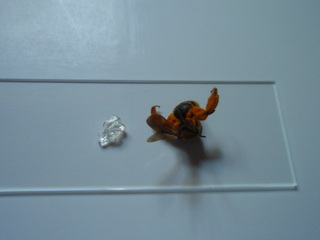
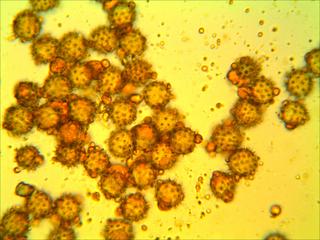 :
: